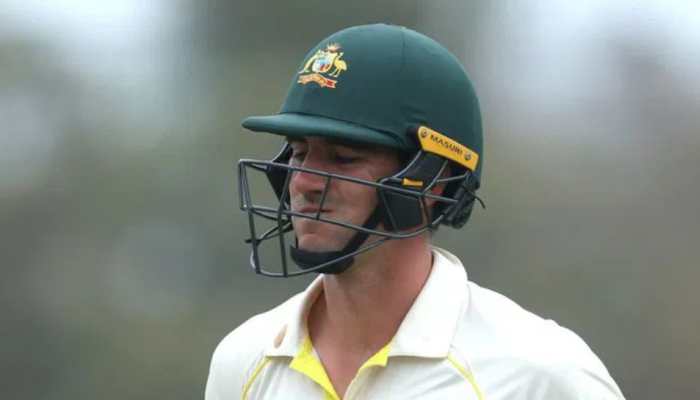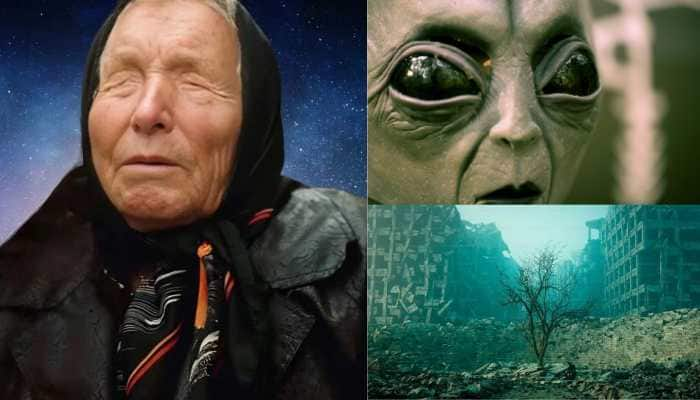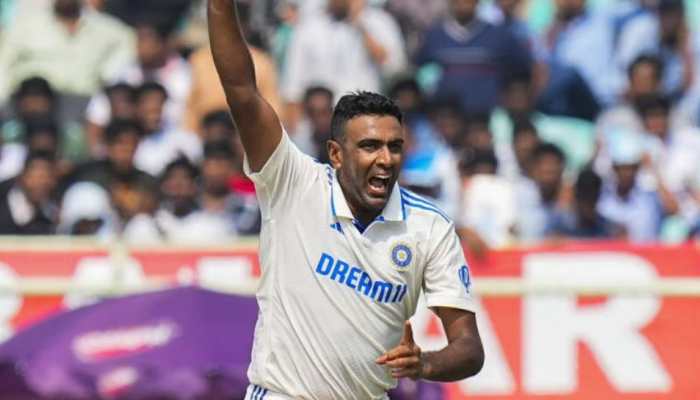What Broke Prabhakaran
Intelligence chief of IPKF Col R Hariharan (Retd) analyses the reasons behind the defeat of LTTE and its dreaded chief Prabhakaran.
Trending Photos
)
 Colonel R Hariharan (Retd)
(Served as Intelligence chief of IPKF)
When the end came for the Tigers it was not surprising, given the fact that the Sri Lankan armed forces were moving determinedly since 2006. What was a bit shocking was the fact that the LTTE leadership chose to- or was forced to- stay in a game which was over. Their leader, Velupillai Prabhakaran, failed to see the gathering clouds and therein lies the story of the downfall of one of the most violent rebels in the world, which as per the FBI inspired al Qaeda.
The LTTE’s performance in the Eelam War IV- since it denounced the India-Lanka Peace Agreement in 1987- glaringly displayed Prabhakaran’s limitations in mastering the art of conventional warfare. He was basically a guerilla leader, who tried to take on a newly trained and equipped Army. Not that he didn’t have reasons to think he could win- his notorious Air Tigers, aboard the Czech-built propeller-driven Zlin Z-143 aircraft, almost wiped out the Lankan Airforce just four months before 9/11. But as the twin towers came down in America, the time for violent struggles was declared over.
Prabhakaran’s political adviser and close confidant, Anton Balasingham, saw the momentous shift and persuaded the soft-spoken but wily LTTE chief to the round table in 2002. At that time, the LTTE was at the pinnacle of its power, controlling 11 districts in the north and east of the island nation and feared for its ruthless suicide attacks. Prabhakaran, proud and brimming with blinding self-belief, could dictate terms. But peace? As Winston Churchill said, “Those who can win a war well can rarely make a good peace and those who could make a good peace would never have won the war.”
If you were to ask me what drowned the LTTE, my answer in a word would be- overconfidence. Prabhakaran had everything going for him after all- his own ‘administration’ in parts of Lanka, a band of lethal fighters ready to consume cyanide but not willing to give up their cause, support in the international community and a passive India. Apart from short-sightedness, lack of trust even on the best of his fighters and complacency, following are Prabhakaran’s strategic flaws in a nutshell:
Handling of Karuna: Vinayagamoorthy Muralitharan, often known as Colonel Karuna Amman, was once the bodyguard of Prabhakaran who captured the strategic Elephant Pass in 1997-98. He was the representative of Prabhakaran in the eastern stronghold of LTTE, Batticaloa, but deserted his leader in 2004, alleging that his men- a source of the best of LTTE commanders- were not being treated at par with those in the north where Prabhakaran was based.
His complaints were handled with disdain, as Prabhakaran was not in the habit of any objections being raised in his organisation. No effort was made to patch up with him and instead killer squads were sent to hunt him down in 2004, even as talks for peace were being held. As Karuna joined the Rajapaksha government as a minister, LTTE’s military capability was blunted. Not only did the dreaded Black Tigers become less effective which was visible in a couple of failed suicide attacks, it showed there was space for manoeuvre by the Government.
Boycott of Presidential Poll 2005: In a decision that showed a lack of political far-sightedness, the LTTE imposed a boycott against voting in 2005 in areas under its control and prevented Tamils from voting. This resulted in the defeat of Ranil Wickremesinghe, who sponsored the peace process of 2002, and led to the election of his rival Mahinda Rajapaksa as President with a wafer thin majority mainly through Southern Sinhala votes. Prabhakaran did not take seriously Rajapaksa’s repeated avowal to wrap up the peace talks and eliminate the LTTE made during the electoral campaign, which cost him dearly as the President usurped all powers and appointed his trusted aides- a brother and old friends- in key posts to steam roll his agendas, starting with the determined fight against the Tigers in April 2006.
Ignoring International Reaction: Prabhakaran failed to read the changing global attitude to terrorist methods after 9/11 terror attacks and measures taken to control trans-national terrorism. His repeated violations of ceasefire terms, particularly the killing of Sri Lanka Foreign Minister Lakshman Kadirgamar in utter disregard to international opinion resulted in 32 countries banning the organisation. Similarly, the attack on Army Chief Sarath Fonseka damaged LTTE’s credibility further and provided legitimacy for Sri Lanka to go to war with it. Apart from this, the countries involved in the peace process felt ditched by the LTTE as the latter didn’t let the process succeed.
Relations with India: After gaining the status of the sole arbiter of the Tamil cause in the peace process, the LTTE failed to mend its ties with India. Thanks to Prabhakaran’s egocentric reasoning, the fund of goodwill for the Tamil cause existing in India was never tapped to pressurise Sri Lanka to arrive at a political solution. Instead, it was the successive Sri Lanka Presidents who cultivated New Delhi to their advantage. On the other hand, Prabhakaran made India’s policy makers hostile by eliminating Rajiv Gandhi.
As luck would have it, the war came at a time when India was in the middle of its Parliamentary elections and politics was being played to suit various constituencies. This tied the hands of the incumbent government to take any major steps for peace. Unfortunately for India (and the LTTE), it was painted into background in the war pitch while its rivals, China and Pakistan, actively gained ground by supporting the government diplomatically as well as militarily.
While India is aware of Pakistan and China making Sri Lanka a strategic partner (Chidambaram said ‘China is fishing in troubled waters in Lanka’), it is yet to take a credible and decisive stand in its backyard struggle.
Failure to Objectively Assess the Security Forces: Riding the crest of success in 2002, Prabhakaran was probably lulled into the belief that the LTTE was invincible. Perhaps this was the reason that prevented him from objectively assessing the strategic impact of the emerging convergence of Sri Lanka’s political and military goals after President Rajapaksa took over and appointed Lt. Gen. Sarath Fonseka, as the able Army chief who was determined to decimate the LTTE after he escaped a bid on his life in 2006.
The international support and cooperation to Sri Lanka, particularly in improving the military’s capability, were used as material for LTTE propaganda rather than assessing its impact on the fighting prowess of the security forces. This led to gross underestimation of the ability of the armed forces to relentlessly pursue the offensive against the LTTE.
The war started in 2006. In the three years that followed, the armed forces were systematically improved, strengthened and expanded (in the year 2008 alone 40,000 troops were added), not leaving its victory to chance.
Inability to Provide a Strategic Military Response: After the loss of its territory in the eastern province courtesy Col. Karuna’s breaking away, the LTTE had no pro-active strategy in the north. It was the Lankan security forces that dominated the military initiative all along. The LTTE failed to pick up the gauntlet and achieve a strategic surprise during the three-year long campaign, as it did in the Eelam War III in 1995 when it captured the Elephant Pass despite the overwhelming Sri Lankan superiority in fire power and strength.
While Fonseka adopted a multi pronged strategy to attack LTTE from all fronts and cut off its links with the outside world, Prabhakaran merely remained defensive, erecting bunds for his cadre. This drove out the fight from his soldiers, who were basically trained guerrillas.
Trapping Civilians in the War Zone: The LTTE moved all the civilians from captured areas to areas under its control as the security forces advanced. This was a reactive defence strategy and affected the mobility of cadres, pinning them down to static defences. This questionable strategy neither prevented the security forces from using their heavy weapons nor vindicated the LTTE’s use of civilians as human shields. It generated only adverse publicity and led to the killing of thousands of innocents. Many more were left deprived of food, water and home for months on end, leading to one of the biggest crises of Internally Displaced Persons.
One can safely conclude that the above reasons led to the downfall of the LTTE and ultimately to the killing of the unchallenged leader, V Prabhakaran. It has left important lessons in its wake for all sides and one need not go too deep to come face to face with them.
The question now arises: What of the Tamils and their cause for equality vis-à-vis the Sinhalese. Well, this is the victory of the Lankan state and President Rajapaksa is in the position of dictating his terms for peace. As the Tamils have no worthwhile leadership, either politically or militarily, the LTTE may take years to get back into shape.
It is not going to be an easy time for the Tamils of Sri Lanka and this is what the failed mission of Prabhakaran has achieved.
As told to Shashank Chouhan of Zeenews.com
Colonel R Hariharan (Retd)
(Served as Intelligence chief of IPKF)
When the end came for the Tigers it was not surprising, given the fact that the Sri Lankan armed forces were moving determinedly since 2006. What was a bit shocking was the fact that the LTTE leadership chose to- or was forced to- stay in a game which was over. Their leader, Velupillai Prabhakaran, failed to see the gathering clouds and therein lies the story of the downfall of one of the most violent rebels in the world, which as per the FBI inspired al Qaeda.
The LTTE’s performance in the Eelam War IV- since it denounced the India-Lanka Peace Agreement in 1987- glaringly displayed Prabhakaran’s limitations in mastering the art of conventional warfare. He was basically a guerilla leader, who tried to take on a newly trained and equipped Army. Not that he didn’t have reasons to think he could win- his notorious Air Tigers, aboard the Czech-built propeller-driven Zlin Z-143 aircraft, almost wiped out the Lankan Airforce just four months before 9/11. But as the twin towers came down in America, the time for violent struggles was declared over.
Prabhakaran’s political adviser and close confidant, Anton Balasingham, saw the momentous shift and persuaded the soft-spoken but wily LTTE chief to the round table in 2002. At that time, the LTTE was at the pinnacle of its power, controlling 11 districts in the north and east of the island nation and feared for its ruthless suicide attacks. Prabhakaran, proud and brimming with blinding self-belief, could dictate terms. But peace? As Winston Churchill said, “Those who can win a war well can rarely make a good peace and those who could make a good peace would never have won the war.”
If you were to ask me what drowned the LTTE, my answer in a word would be- overconfidence. Prabhakaran had everything going for him after all- his own ‘administration’ in parts of Lanka, a band of lethal fighters ready to consume cyanide but not willing to give up their cause, support in the international community and a passive India. Apart from short-sightedness, lack of trust even on the best of his fighters and complacency, following are Prabhakaran’s strategic flaws in a nutshell:
Handling of Karuna: Vinayagamoorthy Muralitharan, often known as Colonel Karuna Amman, was once the bodyguard of Prabhakaran who captured the strategic Elephant Pass in 1997-98. He was the representative of Prabhakaran in the eastern stronghold of LTTE, Batticaloa, but deserted his leader in 2004, alleging that his men- a source of the best of LTTE commanders- were not being treated at par with those in the north where Prabhakaran was based.
His complaints were handled with disdain, as Prabhakaran was not in the habit of any objections being raised in his organisation. No effort was made to patch up with him and instead killer squads were sent to hunt him down in 2004, even as talks for peace were being held. As Karuna joined the Rajapaksha government as a minister, LTTE’s military capability was blunted. Not only did the dreaded Black Tigers become less effective which was visible in a couple of failed suicide attacks, it showed there was space for manoeuvre by the Government.
Boycott of Presidential Poll 2005: In a decision that showed a lack of political far-sightedness, the LTTE imposed a boycott against voting in 2005 in areas under its control and prevented Tamils from voting. This resulted in the defeat of Ranil Wickremesinghe, who sponsored the peace process of 2002, and led to the election of his rival Mahinda Rajapaksa as President with a wafer thin majority mainly through Southern Sinhala votes. Prabhakaran did not take seriously Rajapaksa’s repeated avowal to wrap up the peace talks and eliminate the LTTE made during the electoral campaign, which cost him dearly as the President usurped all powers and appointed his trusted aides- a brother and old friends- in key posts to steam roll his agendas, starting with the determined fight against the Tigers in April 2006.
Ignoring International Reaction: Prabhakaran failed to read the changing global attitude to terrorist methods after 9/11 terror attacks and measures taken to control trans-national terrorism. His repeated violations of ceasefire terms, particularly the killing of Sri Lanka Foreign Minister Lakshman Kadirgamar in utter disregard to international opinion resulted in 32 countries banning the organisation. Similarly, the attack on Army Chief Sarath Fonseka damaged LTTE’s credibility further and provided legitimacy for Sri Lanka to go to war with it. Apart from this, the countries involved in the peace process felt ditched by the LTTE as the latter didn’t let the process succeed.
Relations with India: After gaining the status of the sole arbiter of the Tamil cause in the peace process, the LTTE failed to mend its ties with India. Thanks to Prabhakaran’s egocentric reasoning, the fund of goodwill for the Tamil cause existing in India was never tapped to pressurise Sri Lanka to arrive at a political solution. Instead, it was the successive Sri Lanka Presidents who cultivated New Delhi to their advantage. On the other hand, Prabhakaran made India’s policy makers hostile by eliminating Rajiv Gandhi.
As luck would have it, the war came at a time when India was in the middle of its Parliamentary elections and politics was being played to suit various constituencies. This tied the hands of the incumbent government to take any major steps for peace. Unfortunately for India (and the LTTE), it was painted into background in the war pitch while its rivals, China and Pakistan, actively gained ground by supporting the government diplomatically as well as militarily.
While India is aware of Pakistan and China making Sri Lanka a strategic partner (Chidambaram said ‘China is fishing in troubled waters in Lanka’), it is yet to take a credible and decisive stand in its backyard struggle.
Failure to Objectively Assess the Security Forces: Riding the crest of success in 2002, Prabhakaran was probably lulled into the belief that the LTTE was invincible. Perhaps this was the reason that prevented him from objectively assessing the strategic impact of the emerging convergence of Sri Lanka’s political and military goals after President Rajapaksa took over and appointed Lt. Gen. Sarath Fonseka, as the able Army chief who was determined to decimate the LTTE after he escaped a bid on his life in 2006.
The international support and cooperation to Sri Lanka, particularly in improving the military’s capability, were used as material for LTTE propaganda rather than assessing its impact on the fighting prowess of the security forces. This led to gross underestimation of the ability of the armed forces to relentlessly pursue the offensive against the LTTE.
The war started in 2006. In the three years that followed, the armed forces were systematically improved, strengthened and expanded (in the year 2008 alone 40,000 troops were added), not leaving its victory to chance.
Inability to Provide a Strategic Military Response: After the loss of its territory in the eastern province courtesy Col. Karuna’s breaking away, the LTTE had no pro-active strategy in the north. It was the Lankan security forces that dominated the military initiative all along. The LTTE failed to pick up the gauntlet and achieve a strategic surprise during the three-year long campaign, as it did in the Eelam War III in 1995 when it captured the Elephant Pass despite the overwhelming Sri Lankan superiority in fire power and strength.
While Fonseka adopted a multi pronged strategy to attack LTTE from all fronts and cut off its links with the outside world, Prabhakaran merely remained defensive, erecting bunds for his cadre. This drove out the fight from his soldiers, who were basically trained guerrillas.
Trapping Civilians in the War Zone: The LTTE moved all the civilians from captured areas to areas under its control as the security forces advanced. This was a reactive defence strategy and affected the mobility of cadres, pinning them down to static defences. This questionable strategy neither prevented the security forces from using their heavy weapons nor vindicated the LTTE’s use of civilians as human shields. It generated only adverse publicity and led to the killing of thousands of innocents. Many more were left deprived of food, water and home for months on end, leading to one of the biggest crises of Internally Displaced Persons.
One can safely conclude that the above reasons led to the downfall of the LTTE and ultimately to the killing of the unchallenged leader, V Prabhakaran. It has left important lessons in its wake for all sides and one need not go too deep to come face to face with them.
The question now arises: What of the Tamils and their cause for equality vis-à-vis the Sinhalese. Well, this is the victory of the Lankan state and President Rajapaksa is in the position of dictating his terms for peace. As the Tamils have no worthwhile leadership, either politically or militarily, the LTTE may take years to get back into shape.
It is not going to be an easy time for the Tamils of Sri Lanka and this is what the failed mission of Prabhakaran has achieved.
As told to Shashank Chouhan of Zeenews.com
Stay informed on all the latest news, real-time breaking news updates, and follow all the important headlines in india news and world News on Zee News.
Advertisement
Live Tv
Advertisement







)
)
)
)
)
)
)
)
)
)
